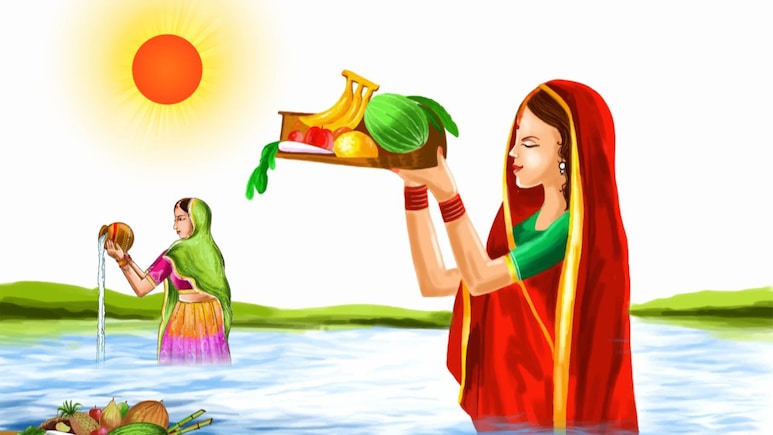
- The first day, Nahay-Khay, involves bathing and a sattvik meal before fasting
- Devotees observe a 36-hour Nirjala fast on the second day with evening offerings
- The festival ends on day four with Usha Arghya, morning prayers, and breaking the fast
Chhath Puja is an important and highly revered festival in Hinduism, celebrated to worship Lord Surya (Sun God) and Chhathi Maiya. It is celebrated with great enthusiasm and devotion, especially in Bihar, Uttar Pradesh, Jharkhand, and other parts of eastern India. It is also known by the names Surya Shashthi, Daala Chhath, Chhathi Mai Puja, and Pratihar.
In 2025, Chhath Puja begins on Saturday, October 25, and will end on Tuesday, October 28.
The first day, known as Nahay-Khay, marks the beginning of Chhath Puja and emphasises purity, cleanliness, and self-discipline. On this day, devotees focus on purifying their bodies and minds to prepare for the arduous fast and rituals ahead. Bathing in rivers or ponds, is considered auspicious, and those who cannot do so can bathe at home with Ganga water. After bathing, devotees wear clean and new clothes and begin the Chhath fast with devotion. Nahay-Khay also symbolises new beginnings, signifying renewal of life, spiritual purity, and prayers for the family's well-being, prosperity, and peace. The fast begins with simple, sattvik food, prepared with special care and devotion.
Chhath Puja 2025: Date and Time
Key Date: Monday, October 27, 2025
Sunrise: 06:30 AM
Sunset: 05:40 PM
Shashthi Tithi Start: 06:04 AM, October 27
Shashthi Tithi End: 07:59 AM, October 28
Puja and Rituals
First Day - Nahay-Khay:
The festival begins with Nahay-Khay. On this day, devotees bathe in holy rivers or ponds and also take Ganga water to bring home. This is followed by a satvik meal of gourd, lentils, and rice, which is the last meal before the fast. Onion and garlic are not consumed on this day.
Second Day - Nirjala Vrat and Offering:
On the second day, devotees observe a Nirjala Vrat (waterless fast) throughout the day. After sunset, they offer kheer (rice pudding), roti, and fruits to Lord Surya, which are then distributed among family and neighbors. On this day, a 36-hour fast begins, continuing until the next day.
Day 3 - Sandhya Arghya:
The most important day of Chhath Puja is Sandhya Arghya. Devotees gather at the ghats, carrying baskets decorated with bamboo, coconuts, thekua, and lamps. At sunset, water is offered and prayers are offered for the prosperity, health, and happiness of the family. Women sing hymns and praise Chhathi Maiya and the Sun God, creating a highly spiritual atmosphere.
Day 4 - Usha Arghya and Parana:
On the morning of October 28, devotees offer arghya to the rising sun and pray for the well-being of their families. The fast concludes with the partaking of prasad. This day is considered a symbol of new beginnings, purity, and spiritual renewal.
Significance Of Chhath Puja
Chhath Puja is a festival of self-discipline, devotion, and purity. It is believed that fasting and worship bring happiness, peace, prosperity, and health to the family. Devotees believe that these rituals remove obstacles in life and bring spiritual peace. This is why this festival is so religiously and culturally significant.
As the festival approaches, families across eastern India begin preparing for Chhath Puja with devotion and follow traditions passed down through generations.
Track Latest News Live on NDTV.com and get news updates from India and around the world

